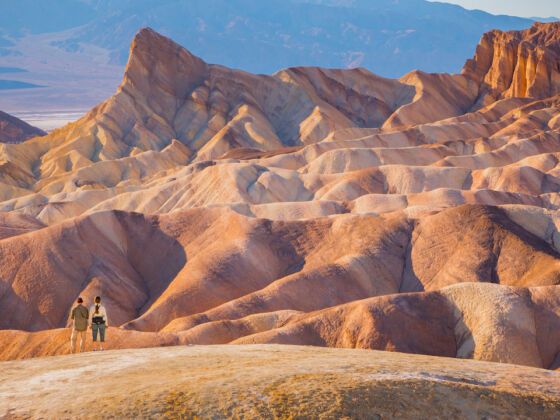Los Angeles to Death Valley National Park Entrance
When driving from Los Angeles to Death Valley National Park, make a stop in Barstow to the see 134-foot tall thermometer and grab a gyro at the Mad Greek. To see an ancient mammoth skeleton, visit the tiny Shoshone Museum, and stay the night at the Shoshone Inn. Then, once the sun goes down, go for a nighttime swim with the bats a natural spring-fed pool that’s just a 5-minute walk down the street.
